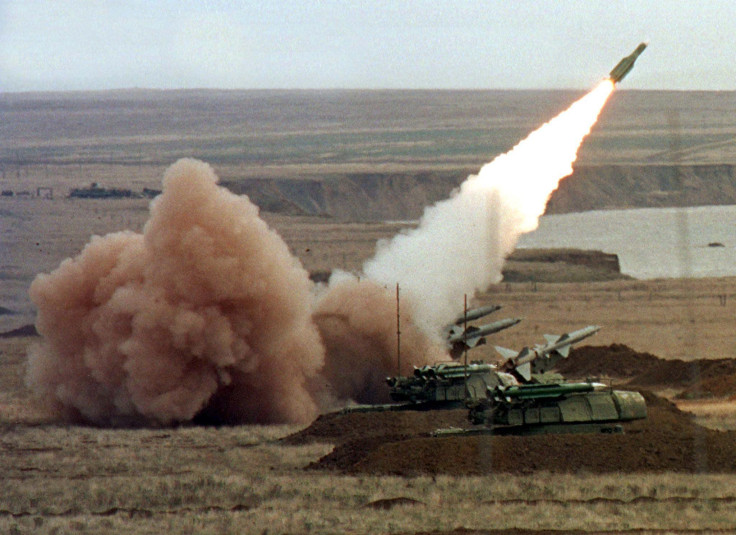MH17: Russian Missile Maker Claims Jetliner Downed By Older Version Of Buk Missile Found In Ukraine's Arsenal

Malaysia Airlines Flight MH17 was downed by an older version of a surface-to-air Buk missile, the Russian maker of the missile system claimed Tuesday, according to the Associated Press (AP). A company official added that the type of Buk missile used in the attack was no longer in service with the Russian military, but was available in Ukraine's arsenal.
Mikhail Malyshevsky, an adviser to the director general of Almaz-Antei, the state-controlled missile company, said at a news conference Tuesday that the claim was based on publicly available photographs of the wreckage, AP reported. The aircraft, which was traveling from Amsterdam to Kuala Lumpur, went down in an area of eastern Ukraine held by pro-Russian separatists. The Ukrainian government and pro-Moscow rebel forces have blamed each other for the plane's downing.
“We do not rule out other versions, but we stand by our analysis that Buk M1 hit MH17,” RT News, a local newspaper, quoted Almaz-Antei as saying.
Malyshevsky reportedly said that the damage to the plane's body was consistent with the Buk missile and its warhead in the Ukrainian military. However, Malyshevsky and Almaz-Antei director Yan Novikov, both of whom spoke at the conference, reportedly did not directly blame Ukraine for the July plane crash, which killed all 298 people on board.
American satellites were spotted over the contested region of Donbas -- where the plane was shot -- at the time of the downing, Almaz-Antei claimed, according to RT News, adding that it was unclear why the U.S. had not revealed its satellite findings to help determine who shot down the plane.
Tuesday's conference was reportedly held in connection to Almaz-Antei’s appeal to the European Court of Justice against sanctions by the European Union over Flight MH17's crash. The EU has accused Moscow of supplying pro-Russian separatists in eastern Ukraine with heavy weapons, including surface-to-air missiles produced by Almaz-Antei, which may have been used to down the passenger jet.
A preliminary report of the investigation into the crash by Dutch investigators -- released in September 2014 -- had stated that the jetliner broke apart in mid-air after being hit by “a large number of high-energy objects that penetrated the aircraft from outside.”
© Copyright IBTimes 2024. All rights reserved.





















